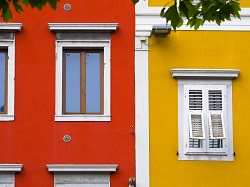Smart digital platform to boost energy efficiency in cities
The platform, designed for city planners, industry and energy stakeholders, assesses and maps buildings’ energy behaviour, and can also remotely control public street lighting. The platform has already succeeded in cutting energy use in several cities across Europe where it has been tested. In Ferrara, Italy, about €2 million was saved in energy certification costs for 10, 000 buildings. Overall there were total savings equal to around €450 per year in public buildings, such as schools. In Rovereto, Italy, energy use was cut by 19-21 % in two pilot projects, whilst in Bassano, Italy, €74 was saved per street light per year – a cut of more than 50 % in energy consumption. Meanwhile, in Zagreb, Croatia, the project achieved estimated savings of 10-30 %, and in Trentino, Italy, the city’s annual electricity bill saw savings of around 7-10 %. Mapping real energy needs Cities use exceptionally large amounts of energy, giving them a leading role in the drive to reduce CO2 emissions. Around 40 % of the total EU final energy consumption is accounted for by buildings. However, the project team realised that many key stakeholders, such as public administration officials, still lack adequate knowledge about actions that could be taken to reduce energy consumption in cities and urban areas. In order to address this, the project developed its platform to operate on three different scales: the city scale by mapping the entire cityscape, the building scale by creating awareness of a building's overall energy behaviour, and on a public street lighting scale that saw the smart automation of public street lighting networks. Using data based on available public services (such as planning information), the project created ‘ecomaps’ that outline the current energy consumption of an urban environment, before using them to assess the area’s real energy needs and pinpointing where savings could be made. The ecomaps also allow for the energy pre-certification of buildings on an urban-wide scale. Additionally, the SUNSHINE digital platform uses localised weather data to plan for an efficient use of heating and cooling systems within buildings to further lower urban energy usage. Moreover, the platform allows for the interoperable control of street lighting systems based on Automatic Meter Reading (AMR) facilities. These are accessible remotely, via interoperable standards, through the internet and through a customised smartphone/tablet App. Additional project results and next steps In addition to cutting energy usage, the SUNSHINE project platform has also shown that it is able to help improve municipal decision making, provide a platform for the creation of new businesses and start-ups, improve the quality of life for citizens, and stimulate further investment in energy efficiency. The project partners now aim in the short-term to intensify their training programme for relevant stakeholders, particularly public officials and urban planners. In the longer-term, they hope to engage in further research, potentially through a follow-up project funded under Horizon 2020, to refine further the SUNSHINE platform, and also to advise more cities across Europe on how the platform can be beneficially tailored to their needs. Overall, the project has demonstrated the potential for the real-time mapping and management of changes with regards to energy consumption, creating a new, flexible and dynamic means of formulating urban policy. For more information please see: SUNSHINE project website
Countries
Italy



